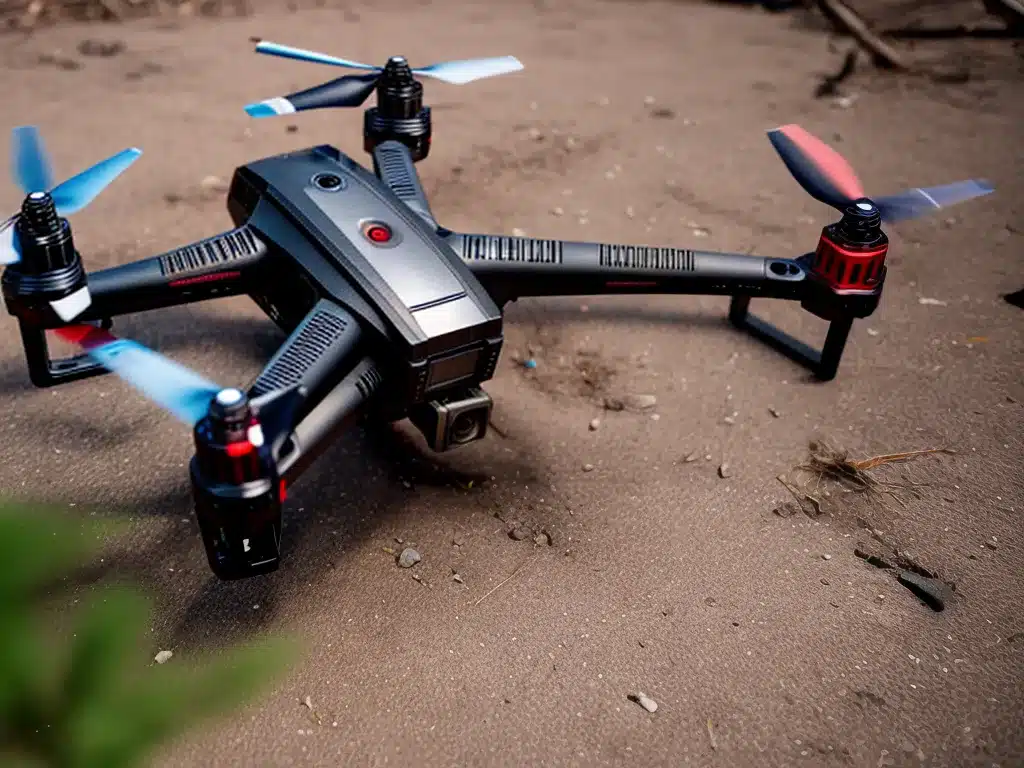Losing footage and photos from a drone or action camera crash can be devastating. As an avid user of drones and action cams, I know the sinking feeling when a crash results in potential data loss. However, there are several effective methods to try to recover data from a damaged device. Here’s my guide on how to do it in 2023.
Assess The Damage
The first step is to assess the extent of the damage.
- Is the device completely destroyed or just partially damaged?
- Does it turn on at all or show any signs of life?
- Are there any visible cracks, dents, or water damage?
Thoroughly inspect the drone or action cam to determine the condition of the internal components. The more intact it is, the better chance you’ll have of recovering data.
Remove The Storage Media
If the device will turn on, excellent. Carefully remove the SD card, micro SD card, or other storage media. Avoid further damage to the components.
If it won’t turn on, you’ll need to open up the casing to access the storage media. This requires small electronics tools like tweezers and screwdrivers. Be very gentle to avoid further internal damage.
Once you extract the storage media, the next step is attempting data recovery.
Try Recovery Software
Specialized data recovery software is often the best solution for retrieving data from crashed devices. Options like Disk Drill or EaseUS offer free trial versions.
Follow these general steps when using recovery software:
- Connect the storage media to a computer, ideally with a card reader.
- Run the data recovery program and select the drive letter associated with the media.
- Let the software scan for recoverable files. This may take several hours.
- Preview found files to identify your lost footage and photos.
- Selectively recover only your wanted data to avoid overwriting media.
Advanced recovery software can resurrect data even from formatted, corrupted, or damaged drives. The sooner you run recovery after a crash, the better.
Try Manual Recovery
If software can’t find your files, you may need to manually piece together data from the storage media. This requires technical skill and knowledge of drive structures.
Some manual steps to try:
- Use data carving utilities like Photorec to scan and extract raw files without relying on filesystem metadata.
- View the hex data of the drive with a disk editor to locate familiar file headers and signatures.
- Access readable sectors and carve out portions of critical video and photo files.
- Repair the filesystem enough to recover previously inaccessible files.
Manual methods can be time-consuming and limited, but are sometimes the last option.
Send To A Professional Recovery Service
For highly valuable or seemingly unrecoverable data, seek help from a professional recovery lab. They have specialized tools, clean room facilities, and decades of experience.
However, pros typically charge $500 to $3000 or more depending on the device and damage. Weigh the value of your data against the high costs.
Prevent Future Data Loss
While you hopefully recover files this time, also implement practices to avoid crashes and data loss going forward:
-
Frequently backup your data – Copy files to multiple locations like external hard drives, the cloud, or Blu-ray discs.
-
Use storage media appropriately – Don’t overwrite cards, eject properly, and avoid shock/water damage.
-
Handle devices carefully – Transport them in protective cases and avoid drops, crashes, or collisions.
-
Learn to fly/drive safely – hone your piloting and driving skills to prevent accidents.
No recovery method is perfect, but being prepared can help minimize permanent data loss. With effort and luck this year, you can rescue files from your crashed drone or action cam.













